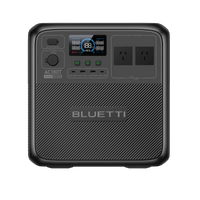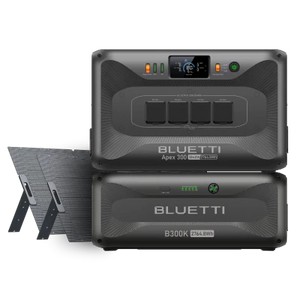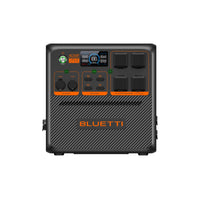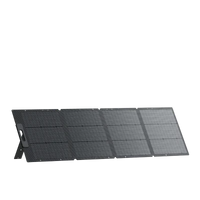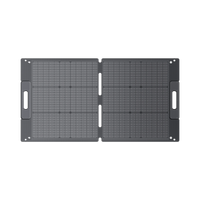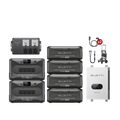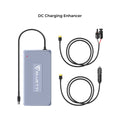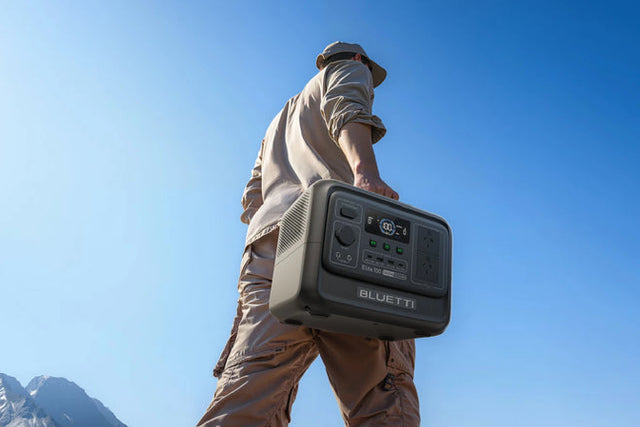Electricity is an essential part of modern daily life, powering everything from our lights and appliances to our devices and transportation. However, as we rely more and more on electricity, the cost of this valuable resource continues to rise. With rates varying significantly across different states in Australia, it is important to be aware of the average electricity costs per kilowatt-hour (kWh) in your area. In this article, we will explore the average electricity costs per kWh in each state and the factors that contribute to these differences. Whether you are a homeowner trying to budget for your monthly bills or a business owner looking to reduce expenses, understanding the average electricity costs per kWh by state can help you make informed decisions about your energy usage.
The cost of electricity is a major concern for households and businesses alike. It is an essential utility that powers our daily lives and the prices of electricity can vary greatly across different states in Australia. In this article, we will be looking at the average electricity costs per kWh (kilowatt-hour) by state in Australia.| State | Distribution Network | Average Electricity Usage Rate (per kWh) |
|---|---|---|
| NSW | Ausgrid | 35.7c/kWh |
| Endeavour Energy | 37.2c/kWh | |
| Essential Energy | 38.9c/kWh | |
| VIC | AusNet Services | 35.8c/kWh |
| Citipower | 26.7c/kWh | |
| Jemena | 30.7c/kWh | |
| Powercor | 30.4c/kWh | |
| United Energy | 29.3c/kWh | |
| EnergyEx | 29.8c/kWh | |
| QLD | Energex | 31.4c/kWh |
| SA | SA Power Networks | 45.3c/kWh |
| ACT | Evoenergy | 26.6c/kWh |
| TAS | TasNetworks | 29.5c/kWh |
The above table gives an overview of the average electricity costs per kWh by state in Australia. It is important to note that these rates are based on the distribution network and may vary for different electricity providers within the same state. The rates are also subject to change and are accurate as of 2021.
Let us take a closer look at the different states and their average electricity costs per kWh.
New South Wales (NSW):
The state of New South Wales has three distribution networks – Ausgrid, Endeavour Energy, and Essential Energy. The average electricity rates for these networks range from 35.7c/kWh to 38.9c/kWh. This makes NSW one of the most expensive states for electricity, with the average rate being around 36.9c/kWh.Victoria (VIC):
VIC also has multiple distribution networks, including AusNet Services, Citipower, Jemena, Powercor, and United Energy. The average electricity rates for these networks range from 26.7c/kWh to 35.8c/kWh. VIC has one of the lowest average electricity rates in Australia, with an average of 30.6c/kWh.Queensland (QLD):
The state of Queensland has only one distribution network – Energex. The average electricity rate for Energex is 31.4c/kWh, making it one of the more affordable states for electricity in Australia.South Australia (SA):
SA has one distribution network – SA Power Networks. The average electricity rate for this network is 45.3c/kWh, making it the most expensive state for electricity in Australia. This is due to the high reliance on renewable energy sources in SA, which can be more expensive to produce.Australian Capital Territory (ACT):
ACT has one distribution network – Evoenergy, with an average electricity rate of 26.6c/kWh. This makes the ACT one of the more affordable states for electricity, with an average rate of 26.6c/kWh.Tasmania (TAS):
The state of Tasmania has one distribution network – TasNetworks. The average electricity rate for this network is 29.5c/kWh, making it one of the more affordable states for electricity in Australia.Factors Affecting Electricity Costs:
There are several factors that can affect the average electricity costs per kWh. These include the cost of generation, transmission, and distribution. The cost of generators, such as coal, gas, and renewables, can vary depending on supply and demand. Retailers also play a role in determining the electricity rates, as they add their own costs for providing electricity services to consumers.Another factor is the location of the state and its distance from power plants. For example, states that are closer to power plants may have lower transmission costs, while states that are further away may have higher transmission costs.
How to Reduce Electricity Costs:
There are several ways in which households and businesses can reduce their electricity costs. One way is to use energy-efficient appliances and lighting. These can significantly reduce the amount of electricity used, resulting in lower bills.Another way is to switch to a different electricity provider. With the deregulation of the electricity market in Australia, consumers have the option to choose their provider, and some may offer lower rates than others.
Additionally, investing in renewable energy sources, such as solar panels, can also help reduce electricity costs in the long run. This is because households and businesses can generate their own electricity, reducing the reliance on the grid and thus, lowering bills.
the average electricity costs per kWh in Australia vary greatly by state. Factors such as location, distribution networks, and the cost of generation and transmission all play a role in determining the rates. However, consumers have the power to reduce their electricity costs by being mindful of their energy usage and exploring alternative energy options.

5 States with the Highest Electricity Bills in 2023
Electricity costs can vary greatly from state to state in Australia. Factors such as population, geographical location, and type of energy sources can all impact the average electricity bill for households. In this article, we will take a look at the top 5 states with the highest electricity bills in 2023, based on the latest data from the Australian Energy Market Commission (AEMC).
| State | Average Bill | Energy Rates | Monthly Usage |
|---|---|---|---|
| New South Wales (NSW) | $1,560 | $0.27/kWh | 5,800 kWh |
| Victoria (VIC) | $1,480 | $0.30/kWh | 4,950 kWh |
| Queensland (QLD) | $1,400 | $0.29/kWh | 4,830 kWh |
| South Australia (SA) | $1,350 | $0.31/kWh | 4,370 kWh |
| Australian Capital Territory (ACT) | $1,330 | $0.32/kWh | 4,160 kWh |
As shown in the table above, New South Wales (NSW) has the highest average electricity bill in 2023, with an estimated cost of $1,560. This is followed closely by Victoria (VIC) at $1,480 and Queensland (QLD) at $1,400. South Australia (SA) and the Australian Capital Territory (ACT) also have relatively high average bills at $1,350 and $1,330 respectively.
One of the major contributing factors to these high electricity bills is the energy rates in these states. As of December 2023, NSW has the highest energy rates at $0.27/kWh, followed by VIC at $0.30/kWh and QLD at $0.29/kWh. SA and ACT have slightly higher rates at $0.31/kWh and $0.32/kWh respectively.
The monthly usage of electricity also plays a significant role in determining the average bill for households. It is interesting to note that NSW has the highest monthly usage at 5,800 kWh, while VIC has the lowest at 4,950 kWh. This could be due to the larger population in NSW and the higher demand for electricity in this state.
the cost of electricity can vary greatly between states in Australia, with New South Wales, Victoria, Queensland, South Australia, and the Australian Capital Territory having the highest average bills in December 2023. Other factors such as energy rates and monthly usage also contribute to these high costs. It is important for households in these states to be mindful of their electricity usage and explore ways to reduce their consumption to save on their energy bills.

Why is my electric bill so high?
One of the biggest concerns for homeowners and renters alike is the cost of electricity. Every month, we receive our electric bill and wonder why it is so high. While there are a variety of factors that can contribute to a high electric bill, one of the main factors is the average electricity cost per kilowatt-hour (kWh) in each state.
In the United States, the average electricity cost per kWh varies significantly from state to state. This is due to a number of factors, including the source of electricity, infrastructure costs, and government regulations. Let's take a closer look at the average electricity costs per kWh by state and explore some of the reasons why your electric bill may be higher or lower than the national average.
What can I do to lower my electric bill?
There are several factors that can contribute to a high electric bill in Australia, including:
1. Electricity rates: The cost of electricity in Australia is generally higher than many other countries due to the country's reliance on coal for energy production. This results in higher rates for consumers.
2. Household size and energy usage: The size of your household and the amount of energy consumed can significantly impact your electric bill. Larger households tend to use more energy, especially if there are multiple appliances and electronics being used.
3. Climate and seasons: Australia experiences extreme weather conditions, with hot summers and cold winters, which can lead to increased energy usage for heating and cooling.
4. Energy inefficiency: Older appliances and electronics tend to be less energy-efficient, leading to higher energy consumption and higher bills. Upgrading to energy-efficient appliances and using energy-saving practices can help reduce your bill.
5. Time of use tariffs: Some energy providers in Australia may charge higher rates during peak hours when demand for electricity is high. This can contribute to a higher bill if you are using a lot of energy during these peak periods.
6. Tariff rates and connection fees: Different energy retailers offer different tariff structures, and some may have higher connection fees or fixed charges, which can contribute to a higher bill.
7. Government taxes and charges: The electricity industry in Australia is heavily regulated, and there are various government taxes and charges that are added to consumers' bills, which can increase the overall cost.
8. Other fees and charges: Additional fees and charges such as late payment fees, paper statement fees, and credit card surcharges can also contribute to a higher electric bill.
There are many factors that can contribute to a high electric bill in Australia, and it's essential to understand your energy usage and choose a plan that best suits your needs to help keep your bill as low as possible.

What to do if you need help with electricity bills
If you're struggling to pay your monthly electricity bill, you're not alone. With the average cost of electricity varying significantly from state to state, it can be a financial burden for many households. But there are steps you can take to help alleviate the pressure of high electricity costs.One option is to invest in an energy storage product, such as the BLUETTI AC500 + B300S. This system allows you to utilize off-peak electricity during low-demand periods and use it during peak hours when the price is higher. By doing so, you can save on the price difference and lower your electricity bill.
The BLUETTI AC500 + B300S is a powerful energy storage product with a rated power of 5,000W. What makes it stand out is its expandable capacity - you can add B300S batteries to increase its capacity from 3,072Wh to 18,432Wh. This means you can customize the system to fit your specific energy needs.
Moreover, the BLUETTI AC500 + B300S uses LiFePO4 batteries with a lifespan of 3,500+ cycles to 80%. This translates to a longer-lasting energy storage solution, saving you money in the long run. The system also allows for smart APP control through WiFi and Bluetooth connection, giving you convenient access to monitor and manage your energy consumption.
In terms of recharging options, the BLUETTI AC500 + B300S offers six ways to recharge - AC, solar, car, generator, lead-acid battery, and dual charging. This not only adds to the versatility of this product but also helps you save money by using alternative energy sources.
With 16 versatile outlets, the BLUETTI AC500 + B300S can power up to 99% of devices, making it suitable for various household needs. But what sets this energy storage product apart is its ability to serve as a 24/7 UPS home backup. In case of a power outage, the system will automatically switch to its backup power, ensuring uninterrupted energy supply for your home.
Lastly, the BLUETTI AC500 + B300S comes with a 4-year warranty, giving you peace of mind and assurance of the product's quality and durability.
investing in an energy storage system like the BLUETTI AC500 + B300S can help you save on electricity costs and ease the burden of high monthly bills. With its expandable capacity, long lifespan, multiple recharging options, and versatile outlets, this product offers a comprehensive and effective solution to managing your energy consumption. So if you're struggling with electricity bills, consider investing in the BLUETTI AC500 + B300S for a more cost-efficient and sustainable energy solution.
What Appliances Use the Most Electricity in Your Home?
The average electricity cost per kWh varies by state, but regardless of where you live, certain appliances in your home tend to consume more electricity than others. These appliances not only contribute to your monthly electricity bill, but they also have a significant impact on the environment. In this article, we will explore the top appliances that use the most electricity in your home and provide tips on how to reduce their energy consumption.
1. Air Conditioner: During hot summer months, your air conditioner works overtime to keep your home cool and comfortable. It's no surprise that this appliance is one of the biggest energy hogs in your home. On average, air conditioners account for about 12% of a household's energy consumption. This percentage can increase significantly if you live in a hotter climate or have an older, less efficient air conditioning unit.
2. Water Heater: Another major energy-consuming appliance in your home is the water heater. It is responsible for heating the water used for showers, dishwashing, and laundry. According to the Australia Department of Energy, water heating can account for up to 18% of a household's energy bill. To reduce your water heater's energy consumption, consider lowering the temperature setting and insulating your water heater tank.
3. Refrigerator: It may come as a surprise, but your refrigerator is one of the most energy-intensive appliances in your home. It is constantly running to keep your food and beverages cool and fresh. On average, refrigerators account for about 4% of a household's energy consumption. To reduce its energy consumption, make sure to keep the refrigerator coils clean and set the temperature to the recommended level.
4. Clothes Dryer: Many households rely on clothes dryers to dry their laundry quickly and efficiently. However, this convenience comes at a cost. Clothes dryers consume a significant amount of energy, accounting for about 3% of a household's energy consumption. To reduce its energy usage, consider air-drying some of your clothes or invest in a more energy-efficient model.
5. Lighting: While each individual light bulb may not consume a lot of energy, collectively, lighting can add up to a significant portion of your energy bill. On average, lighting accounts for about 11% of a household's energy consumption. To reduce lighting energy usage, consider switching to energy-efficient LED bulbs and turning off lights when they are not in use.
6. Oven and Stove: Cooking is a necessary part of daily life, but it can also be a major contributor to your energy bill. Ovens and stoves use a significant amount of energy to heat up and cook food. On average, they account for about 4% of a household's energy consumption. To reduce energy usage in the kitchen, consider using smaller appliances like a microwave or slow cooker, and turn off your oven and stove when not in use.
While these are the top appliances that use the most electricity in your home, it's important to note that other factors such as the age and efficiency of the appliances, as well as your usage habits, can also impact your energy consumption. By being mindful of your energy usage and implementing energy-saving tips, you can reduce your electricity costs and contribute to a more sustainable environment.
As the demand for electricity continues to increase and the cost of traditional fossil fuels rises, it is likely that electricity costs will continue to fluctuate in the future. Therefore, it is crucial for consumers to stay updated on the average electricity costs per kWh in their state and take proactive measures to manage their energy usage. Ultimately, by being mindful of our energy consumption, we can not only save money on our electricity bills but also contribute to a more sustainable future.
Shop products from this article
Be the First to Know
You May Also Like

Save on energy costs by subscribing to the cheapest gas provider in Australia. Find out ways to switch your gas company. Get expert tips on lowering your gas bill.

Discover the latest solar battery prices in Australia for 2025, including ranges and rebates, in a friendly guide.

The Ausnet power outage incidents in 2025, with the official ausnet power outage map, alerts and how you can prepare for pre planned outages easily.












